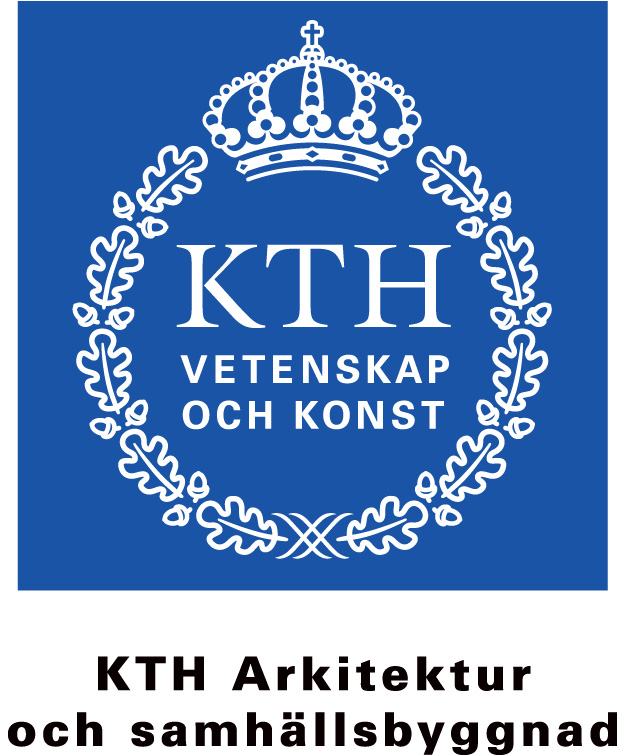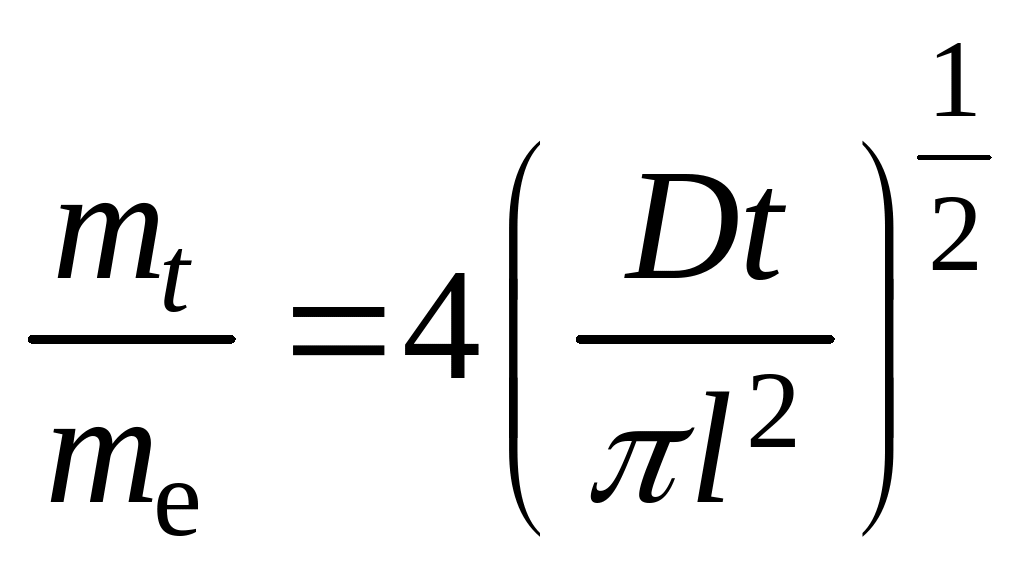acute effects of exercise posture on executive function in transient ischemic attack patients running title: exercise posture and executive
ACUTE EFFECTS OF EXERCISE POSTURE ON EXECUTIVE FUNCTION IN TRANSIENT
ISCHEMIC ATTACK PATIENTS
Running title: Exercise posture and executive function in TIA
James Faulkner1*, Lee Stoner2,3, Rebecca Grigg2, Simon Fryer4, Keeron
Stone4, Danielle Lambrick5
1 Department of Sport and Exercise, University of Winchester,
Winchester, UK.
2 School of Sport and Exercise, Massey University, Wellington, New
Zealand.
3 Department of Exercise and Sport Science, University of North
Carolina at Chapel Hill, Chapel Hill, NC, USA.
4 School of Sport and Exercise, University of Gloucestershire,
Gloucester, UK.
5 School of Health and Life Sciences, University of Southampton,
Southampton, UK.
* Corresponding Author: Dr James Faulkner, Department of Sport and
Exercise, University of Winchester, Winchester, UK. E:
[email protected] T: +44 (0)1962 624932
Abstract
In patients with stroke or transient ischaemic attacks (TIA), a
decline in executive function may limit an individual’s ability to
process motor tasks and re-learn motor skills. The purpose of this
study was to assess the acute effect of exercise posture (seated vs.
supine cycle ergometry) on executive function and prefrontal cortex
perfusion, in patients with TIA. Eleven TIA patients (65±10y) and 15
age-matched, healthy-controls (HC; 62±7y) completed two graded
exercise tests to maximal functional capacity (1 x seated; 1 x supine)
and two 30-minute sub-maximal exercise tests (1 x seated, 1 x supine).
Executive function was assessed prior-to and following (1.5-min Post,
15-min Post) the submaximal exercise tests using a Stroop Task.
Prefrontal cortex perfusion (total hemoglobin) was continuously
recorded using near infrared spectroscopy. There was no Posture
(seated, supine) by Group (TIA, HC) interaction for the Stroop task (P
> .05). HC completed Stroop tasks significantly faster than TIA
(51.9[10.3] vs. 64.2[8.5] s, respectively); while Stroop completion
time significantly improved between Baseline and 1.5-min Post
(61.3[10] vs. 58.1[9.4] s, respectively) and 1.5-min Post and 15-min
Post (54.8[8.9] s). Posture and Group had no significant influence on
prefrontal cortex perfusion (P > .05). In conclusion, executive
function improves to a similar extent in TIA and age-matched,
healthy-controls following an acute bout of exercise, regardless of
exercise posture (seated vs. supine). As acute improvements in
executive function were maintained for 15 minutes, there could be an
important window of opportunity for assigning executive tasks
following exercise rehabilitation for patients with TIA.
Keywords: stroke, cerebral perfusion, cognition, prefrontal cortex,
supine, cycling
Introduction
Following a stroke many patients suffer from impaired mobility and are
at risk of losing their independence. While physical rehabilitation is
effective for restoring mobility, the speed and degree of restoration
to normal function may be impeded by cognitive impairments . In
particular, a decline in executive function may limit the ability to
process motor tasks and re-learn motor skills. These cognitive
impairments result from infarcted brain tissue and subsequent
hypoperfusion and hypo-oxygenation of the infarcted area and adjacent
regions . Indeed, the degree of hypoperfusion seems to correlate with
the degree of cognitive dysfunction , and restoration of perfusion has
been demonstrated to improve cognitive performance in acute ischaemic
stroke . By way of logical extension, simple strategies which acutely
improve cognitive function may enhance the rehabilitation process.
Exercise may be a simple, cost-effective and easily administered
therapy for improving cerebral perfusion and cognitive function. A
meta-analysis has identified a limited number of studies examining
physical activity and cognition in stroke patients; while cognitive
function was atypically the primary outcome measure, and the cognitive
assessment tools were generally suboptimal, physical activity was
shown to improve cognitive function . These findings are in-line with
a number of randomized control trials which have demonstrated that a
single bout of aerobic exercise can acutely improve various cognitive
domains , including spatial and executive functioning .
Consideration does need to be given to the prescribed exercise
intensity and modality. A meta-analysis reported that incremental
exercise in healthy subjects increased prefrontal cortex oxygenation
in a quadratic manner, rising between moderate and hard intensities,
then falling at very hard intensities . In terms of exercise modality,
owing to impaired motor control in stroke patients, the safest form of
aerobic exercise is considered to be cycle ergometry. While upright
cycling is most typically prescribed for these patients, we recently
reported that recumbent cycle ergometry in healthy young men acutely
increased prefrontal cortex oxygenation by a greater magnitude . This
may be because recumbent exercise enhances cardiac output , and
cardiac output has been shown to have a linear relationship with
cerebral blood flow . Contrary to the hypothesis, executive function
was found to improve by a similar amount for both upright and
recumbent exercise; however, there may be a ceiling effect in healthy
young men who would not be expected to have impaired executive
function.
The current study recruited patients diagnosed with a transient
ischaemic attack (TIA), typically reported to be a minor form of
stroke, and age-matched healthy controls. TIA patients were recruited
as, i) they could engage with 30 minutes of moderate intensity cycling
exercise in a seated and supine position, and ii) because recent
studies investigating cognition after TIA suggest that deficits in
executive function persist at least 7 days post-TIA (Ganzer, Barnes,
Uphold & Jacobs, 2016). The purpose of this was to determine the
effects of Group (TIA vs. control) and Posture (seated vs. supine) on,
i) executive function and ii) prefrontal cortex perfusion. Four null
hypotheses were tested, there is no relationship between: H1) Group
and executive function; H2) Posture and executive function; H3) Group
and prefrontal cortex perfusion; H4) Posture and prefrontal cortex
perfusion. Accordingly, the researchers anticipated that executive
function and prefrontal cortex perfusion would be greater in: i) the
healthy age-matched control group than TIA group, and ii) during
supine rather than seated exercise. Findings from this study may aid
rehabilitation specialists in designing optimal rehabilitation
strategies.
Methods
Participants
Eleven TIA patients (age: 65.1 ± 10.1 y; height: 169.7 ± 11.3 cm; body
mass: 85.8 ± 16.9 kg; 9 male, 2 female) and fifteen healthy
age-matched controls (age: 61.5 ± 7.1 y; height: 176.6 ± 8.0 cm; body
mass: 84.9 ± 16.3 kg; 13 male, 2 female) volunteered. The TIA
participants were recruited within 7 ± 3 days of the event, and were
diagnosed with a high risk TIA (ABCD2 score ≥ 4), after review by a
specialist stroke physician. The TIA participants completed an
electrocardiogram (ECG) assessment to establish appropriate
cardiovascular health for this study. Patients were excluded if they
had any of the following: oxygen dependence, uncontrolled angina,
unstable cardiac conditions (i.e., atrial fibrillation), uncontrolled
diabetes mellitus, major medical conditions, claudication, febrile
illness, significant cognitive impairment, immobile. Control group
participants completed a coronary artery disease risk stratification
assessment to ensure that they were asymptomatic of illness, disease
or mental disability and free of any injury. Due to the nature of the
assessment of executive function, participants were excluded if they
suffered from colour blindness or attention deficits. This research
was conducted in agreement with the guidelines and policies of the
institutional ethics committee and New Zealand’s health and disability
ethics committee.
Procedures
Participants performed two familiarisation sessions and four
laboratory-based exercise protocols on a cycle ergometer (Velotron,
RacerMate, Seattle, U.S.A.), within a thermo-neutral environment.
Tests were performed on either an upright, seated (1 x graded exercise
test [GXT], 1 x 30 minute moderate intensity exercise bout) or a
supine (1 x GXT, 1 x 30 minute moderate intensity exercise bout) cycle
ergometer. Tests were performed in a semi-randomized order, separated
by 48 to 72 hours, as it was necessary for moderate intensity exercise
bouts to proceed the respective GXTs. To reduce the risk of
anticipatory effects on physiological parameters, the display screen
of the physiological markers (i.e., oxygen uptake [V̇O2], minute
ventilation [V̇E], respiratory exchange ratio [RER], heart rate [HR]),
along with all cycle ergometer information (i.e., power output), was
concealed from the participant during each exercise test.
The Stroop task was used to assess executive function following
10-minutes of quiet, supine rest (Baseline), and 1.5- (1.5-min Post)
and 15-minutes (15-min Post) following the completion of each moderate
intensity exercise bout. Pre-frontal cortex perfusion was monitored
continuously and in real-time, using near-infrared spectroscopy
(Artinis Medical Systems BV, Zetten, The Netherlands), throughout the
Stroop tasks and exercise protocols (Figure 1). Respiratory variables
were continuously recorded throughout each moderate intensity exercise
bout, and the participant’s blood pressure, heart rate (HR) and
ratings of perceived exertion (RPE; Borg, 1998) were recorded every 10
minutes during exercise.
Seated and supine GXT to maximal functional capacity
The GXTs were used to determine the exercise intensities that would be
prescribed in both the seated and supine submaximal exercise tests.
The seated and supine GXTs were continuous and incremental, commenced
at 60 W and increased 12 W per minute. Criteria for termination of the
maximal GXT was primarily based on volitional exhaustion, although two
or more of the following secondary criteria were accepted as
indicators of maximal functional capacity: HR within 10 beats/min of
age-predicted maximum, RER ≥ 1.10 or RPE ≥ 18 on completion of the
tests (ACSM, 2013). On-line respiratory gas analysis was performed
using a breath-by-breath automatic gas exchange system (Sensormedics
Corporation, Yorba Linda, CA, USA), following volume and gas
calibration. Heart rate was monitored using a wireless chest strap
telemetry system (Polar Electro T31, Kempele, Finland). The Borg 6-20
RPE scale was used to quantify the subjective perception of effort
every 3 minutes during the GXTs. Participants’ peak oxygen consumption
(V̇O2peak) and gaseous exchange threshold (GET) were ascertained for
both exercise bouts.
Seated and supine submaximal exercise tests
During these tests participants cycled at a power output equivalent to
GET for 30 minutes. The GET typically equates to a moderate exercise
intensity (45-60% V̇O2max) . The V-slope method was used to analyse
the slopes of V̇O2 and carbon dioxide (V̇CO2) volume curves from both
the seated and supine GXTs to determine each participant’s power
output at GET . Three independent researchers verified the
interpretation of GET and the corresponding power outputs.
Physiological markers were continuously monitored throughout the test.
Executive Function
Executive function was assessed using the Stroop task (Xavier
Educational Software Ltd., Bangor, Wales), a classic measure of
prefrontal cortex function which has been widely used to assess the
effects of acute exercise on cognition . Participants were habituated
with the Stroop task during two familiarisation sessions, as well as
following each GXT. In this study, the Stroop interference task was
administered as it is more sensitive to executive function than the
traditional Stroop word task . Participants completed the Stroop
interference task wherein four words (‘blue’, ‘yellow’, ‘green’,
‘red’) were randomly presented, consecutively, on a computer screen.
The colour each word was presented in was either congruent or
incongruent with the relevant semantic information (e.g., ‘red’
presented in the colour red or the colour green, respectively).
Participants were tasked with identifying the colour of each word
being presented as quickly as possible, responding by clicking on the
respective answer button (blue, yellow, green, red). Each presentation
of a word constituted a sequence; each test comprised 36 sequences.
The total time to complete the test (completion time), average time
per response (reaction time), and number of correct answers (response
accuracy) were recorded as measures of performance (Baseline, 1.5-min
Post, 15-min Post). Although a time-control (no exercise) condition
was not included in the study design, unpublished findings from our
laboratory has demonstrated good reliability when assessing Stroop
performance before and after 30 minutes quiet seated rest in a young,
healthy population. Similar findings have generally been shown for
Near-infrared Spectroscopy (NIRS) measures (Supplementary Table A).
Near-infrared spectroscopy
Near infrared spectroscopy assessments have been demonstrated to
provide a metric of cognitive activation similar to functional
magnetic resonance imaging during cognitive performance tasks . A
continuous wave NIRS device (PortaLite, Artinis Medical Systems BV,
the Netherlands), which emits infrared light at wavelengths of 760 and
850 nm, was used to detect relative changes in concentrations of
oxygenated hemoglobin [O2Hb] and deoxygenated hemoglobin [HHb],
respectively, as well as the main parameter of interest: total blood
volume (tHb = [O2Hb + HHb]), before, during and after the 30-minutes
of upright and supine exercise (Figure 1). Both wavelengths were
emitted from three transmitters at 3.0, 3.5, and 4.0 cm from the photo
diode detector, allowing for theoretical penetration distances between
1.5-2 cm . Data was collected at 10 Hz, and a differential path-length
factor of 4.0 was used to correct for photon scattering within the
tissue . Depending on individual head geometry, the probe was
positioned over the participant’s prefrontal cortex at Fp1 for right
sided dominant participants and at Fp2 for left sided dominant
participants according to the International 10-20 system of Electrode
Placement (Klem, Luders, Jasper, & Elders, 1999). For the TIA
participants, the NIRS probe was placed on the side in which their TIA
event occurred. The effect of ambient light on NIRS was reduced by
conducting all exercise tests and Stroop tasks in a dimly lit
laboratory. The NIRS device was fixed to the skin with bi-adhesive
tape and covered with a dark opaque cloth to prevent signal
contamination by ambient light, as per manufacturer recommendations.
Data Analysis
Statistical analyses were performed using Statistical Package for
Social Sciences version 21 (SPSS, Inc., Chicago, Illinois, USA). All
data are reported as means (standard deviation, SD) or mean
differences (95% confidence intervals [CI]), unless otherwise
specified. For all statistical tests, alpha was set at 0.05 with an
adjustment made via the Bonferroni technique to protect against type 1
error. Effect size are represented using partial eta squared (ηp2),
with 0.0099, 0.0588, and 0.1379 representing a small, medium, and
large effect .
H1and H2: Independent t-tests were used to compare Stroop task
performance at Baseline between TIA and healthy-control (HC)
participants for both seated and supine exercise. A repeated-measures
ANOVA: Group (TIA vs. HC) by Posture (Seated vs. Supine) by Time
(Baseline, 1.5-min Post, 15-min Post), was used to assess the rate of
change in Stroop task performance (time taken and number of correct
answers). Where assumptions of sphericity were violated, the critical
value of F was adjusted by the Greenhouse–Geisser epsilon value from
the Mauchley Test of Sphericity. Where significant differences were
identified, post-hoc analysis using dependent t-tests were performed.
H3 and H4: Changes in primary (tHb) and secondary (O2Hb, HHb) NIRS
markers were analysed using a repeated-measures ANOVA, as above.
Regression analysis was used to assess whether the change in tHb, O2Hb
and HHb (independent variables [IV]) (Baseline to 1.5-min Post)
accounted for a significant amount of variance in the change in Stroop
performance scores (dependent variable [DV]).
Results
There were no differences in demographic characteristics between TIA
and HC participants (all P > .05; Table 1). The diagnostic location of
the 11 TIA patients were as follows; Anterior circulation (n = 7),
posterior circulation (n = 3), uncertain territory (n = 1).
Graded Exercise Test and Submaximal Exercise Test
There were no Posture by Group interaction effects for any GXT or GET
variables (all P > .05; Table 2). Significant Posture main effects
were observed for V̇O2peak (mean difference [95 %CI]; 2.0 [0.4 to 3.7]
mL·Kg·-1min-1), HR (mean difference [95 %CI]; 11 [8 to 14] b·min-1)
and power output (mean difference [95 %CI]; 21 [15 to 28] W) on
completion of the GXTs (all P < .05), with higher values reported
during the seated GXT compared to the supine GXT. A Group main effect
was also observed for V̇O2peak (P < 0.05), with higher values reported
for HC compared to TIA (mean difference [95 % CI]; 8.6 [1.1 to 16.0]
mL·Kg·-1min-1). At GET, despite differences in absolute V̇O2 and power
output between Posture and Group (P < .05), when expressed as a
proportion of peak values, there were no differences in V̇O2 or power
output for Posture or Group (P > .05; Table 2). Similar findings were
observed for other physiological (minute ventilation, respiratory
exchange ratio, heart rate) and perceptual responses at the end of the
seated and supine submaximal exercise tests (P > .05; Supplementary
Table B).
H1 and H2: Executive Function
There were no Posture by Group by Time interactions for Stroop
completion time or the number of correct answers (P > .05; Table 3).
Across groups, Stroop completion time significantly improved between
Baseline and 1.5-min Post (61.3 [10] vs. 58.1 [9.4] s, respectively)
and 1.5-min Post and 15-min Post (54.8 [8.9] s). There was a
significant Group (H2) main effect, with HC completing the Stroop task
significantly faster than TIA (51.9 [10.3] vs. 64.2 [8.5] s,
respectively; mean difference [95 % CI]; 12.3 [4.9 to 19.8] s). There
was no Posture (H1) main effect (P > .05).
H3 and H4: Prefrontal Cortex Perfusion
There was no Posture by Group by Time interaction, or Group (H3) or
Posture (H4) main effects for each NIRS measure (all P > .05). Time
main effects were observed for tHb, O2Hb, and HHb (P < 0.001; ηp2 all
0.81 – 0.90; Figure 2). Post-hoc analysis demonstrated significant
increases in these measures between Baseline and 1.5-min Post (mean
difference [95 % CI], tHb 15.9 [12.4 to 19.3] %; O2Hb 14.4 [11.3 to
17.5] %; HHb 1.5 [0.9 to 2.1] %).
Prefrontal Cortex Perfusion and Executive Function
As there were no between Group differences for prefrontal cortex
perfusion, regression analysis was implemented with the entire sample
(TIA + HC). Neither tHb (P > .05; R2 = 0; beta [standardized
coefficient] = -.07; Standard error = 0.126; beta [unstandardized
coefficient] = -0.06), O2Hb (P > .05; R2 = 0; beta [standardized
coefficient] = -0.06; Standard error = 0.09; beta [unstandardized
coefficient] = -0.04) or HHb (P > .05; R2 = .03; beta [standardized
coefficient] = -0.18; Standard error = 0.20; beta [unstandardized
coefficient] = -0.24) explained a significant amount of the variance
in the change in Stroop task performance (Baseline to 1.5-min Post;
all P > 0.05).
Discussion
Findings from this study show that TIA patients have a lower baseline
executive function than age-matched healthy controls, but executive
function improves similarly for both Groups following exercise, and
these benefits are maintained for at least 15-minutes. However,
exercise Posture (seated, supine) does not influence the improvement
in executive function. Further, cerebral perfusion was shown to
improve irrespective of Group (TIA, control) or Posture. These novel
findings support the use of exercise to improve executive function,
which may in-turn improve rehabilitation practice.
Executive Function
For the present study, the hypothesis that Group would effect
executive function was rejected (H1), while the hypothesis that
Posture will effect executive function (H2) was not rejected. The
Group main effect can be attributed to baseline differences (Table 3),
as the relative improvement in executive function 15-minutes
post-exercise was similar for both TIA and controls (10.5 vs. 10.6 %,
respectively). While changes in executive function following moderate
intensity exercise have been shown previously in various populations ,
to our knowledge, this is the first study to demonstrate that acute
exercise improves executive function in TIA patients, and that these
patients respond similarly to healthy, age-matched individuals.
The current study explored the association between Posture and
executive function (H2) following a recent study from our group, which
demonstrated that, compared to seated cycle ergometry, recumbent cycle
ergometry in healthy young men acutely increased prefrontal cortex
oxygenation by a greater magnitude . The failure to reject H2 may be
attributable to the lack of effect of Posture on cerebral perfusion
(tHb) in the current study, or the lack of direct association between
cerebral perfusion and executive function, both of which are discussed
below.
Prefrontal Cerebral Perfusion
In this study we used tHb as a measure of prefrontal cortex perfusion,
and found that moderate exercise intensity (~52 % of V̇O2peak)
increased perfusion by 15 u/mol. However, the increase in perfusion
was not influenced by either Group (H3) or Posture (H4). As previously
mentioned, the failure to reject H4 is contrary to a recent study by
our group . This may, at least in part, be explained by the wide
variation in prefrontal cortex perfusion (tHb) and oxygenation (O2Hb)
responses to exercise for participants in the current study (Figure
2), whereas for our previous study the responses were fairly
consistent between participants. This variation may be explained by
differences in the respective cohorts; the previous study recruited a
young (24.6 ± 4.3 y), healthy and physically-active homogenous
population.
Regression analysis demonstrated that, regardless of Posture or Group,
the NIRS markers (tHb, O2Hb, HHb) did not explain a significant
portion of the variance for change in executive function. This is
contrary to a previous study by Endo et al. (2013) who found that,
following arm ergometry at 40% maximal functional capacity (but not at
20 or 60 % of maximal capacity), improvements in oxygenation to the
prefrontal cortex correlated with improved executive function
(Stroop). The contrary findings may be explained by the heterogeneous
responses for the participants in the current study, or may suggest
that other mechanism/s contributed to the observed exercise-induced
improvements in executive function. It has been suggested that the
exercise-induced up-regulation of neurotransmitters such as dopamine,
serotonin, norepinephrine and endorphine , as well as brain-derived
neurotropic factor play a crucial role in improving executive function
.
Clinical implications
These findings may have important implications for rehabilitation of
TIA and stroke patients. Previously, recumbent/supine cycling exercise
has been suggested to be a safer alternative to upright/seated
cycling, and may provide practical advantages for muscle and aerobic
training in patients with impaired physical function . In the present
study, a similar level of improvement was observed in executive
function between the two body positions. This may be due to the fact
that participants were exercising at a similar proportion of their
maximal functional capacity at the end of both (seated and supine)
exercise tests (see Table 2 and Supplementary Table B). Participants
were also exercising at a similar perception of exertion during the
seated and supine exercise, at approximately a ‘somewhat hard’ to
‘hard’ perception of exertion according to the Borg 6-20 RPE Scale.
Although both exercise modes and the prescribed exercise intensity
could be useful in the rehabilitation setting, supine exercise may be
deemed more appropriate as it may be a safer exercise modality for
those populations who lack mobility.
In our study, continued improvements in Stroop performance were
observed 15 minutes after exercise cessation (Table 3). This is in
support of the findings of Chang and colleagues’ (2012), whose
meta-analysis found that the greatest positive effect on cognition
occurs 11-20 minutes after exercise cessation. More recent research
has shown that improvements in cognition can be maintained for a
period of at least 30 minutes post-exercise . These previous findings,
together with the current findings, may have practical implications
for the rehabilitation environment. Following moderate-intensity
exercise there may be a window of opportunity for presenting patients
with neurological deficit with tasks that challenge executive
function.
Future considerations
To determine the mechanistic link between acute exercise and executive
function, studies with larger sample size are required, and which
simultaneously record cerebral perfusion, neurotransmitters and
psychological factors (arousal, mood state). Understanding the
mechanism(s) of action will enable the identification of the optimal
exercise paradigm for enhancing executive function. For example, while
moderate intensity exercise is most effective for increasing cerebral
blood flow , high-intensity intermittent exercise may elicit greater
elevations in serum BDNF . Furthermore, compared to continuous and
moderate intensity exercise, short periods of intense exercise have
been shown to result in greater elevations of BDNF and peripheral
catecholamines, and can improve vocabulary learning by 20% in just one
week . Although this may be evident, the severity and location of the
stroke may have a significant impact on the use of exercise in
improving executive function, as some stroke survivors may be unable
to exercise at low, moderate or high intensities, or for prolonged
durations (i.e., 30 minutes of submaximal exercise). It would also be
useful if future research investigated the effect of exercise on
executive function in a homogenous sample of stroke patients. From a
clinical/rehabilitation perspective, besides determining the optimal
exercise prescription, further research is needed to determine the
optimal timing post-exercise for assigning tasks that challenge
executive function. Additionally, when undertaking such research
investigations into the utility of exercise for improving cognition or
cerebral perfusion, it would also be beneficial to include a
time-control condition.
In conclusion, the present study has demonstrated that an acute bout
of moderate intensity exercise improves executive function in TIA
patients, and that TIA patients appear to respond similarly to
healthy, age-matched controls. The improvements were not moderated by
exercise Posture (seated vs. supine), and were not associated with
prefrontal cortex perfusion. Importantly, the improvements in
executive function were maintained for 15 minutes, suggesting that
there could be an important window for assigning tasks that challenge
executive function.
References
ACSM's guidelines for exercise testing and prescription (2013).
Philadelphia: Lippincott, Williams and Wilkins.
Barenberg, J. (2012). Executive functions in learning processes: do
they benefit from physical activity. Educational Research Review, 6,
208-222. doi:10.1016/j.edurev.2011.04.002
Baron, J. C., Bousser, M. G., Rey, A., Guillard, A., Comar, D., &
Castaigne, P. (1981). Reversal of focal "misery-perfusion syndrome" by
extra-intracranial arterial bypass in hemodynamic cerebral ischemia: A
case study with 15O positron emission tomography. Stroke, 12, 454-459.
doi: 10.1161/01.STR.12.4.454
Beaver, W., Wasserman, K., & Whipp, B. (1986). A new method for
detecting anaerobic threshold by gas exchange. Journal of Applied
Physiology, 60, 2020-2027.
Best, J. R. (2010). Effects of physical activity on children’s
executive function: contributions of experimental research on aerobic
exercise. Developmental Review, 30, 331-351.
doi:10.1016/j.dr.2010.08.001
Borg, G. (1998). Borg's perceived exertion and pain scales. Leeds, UK:
Human Kinetics.
Chance, B., Dait, M. T., Zhang, C., Hamaoka, T., & Hagerman, F.
(1992). Recovery from exercise-induced desaturation in the quadriceps
muscles of elite competitive rowers. American Journal of
Physiology-Cell Physiology, 262, C766-C775.
Chang, Y. K., Labban, J. D., Gapin, J. I., & Etnier, J. L. (2012). The
effects of acute exercise on cognitive performance: A meta-analysis.
Brain Research, 1453, 87-101. doi:10.1016/j.brainres.2012.02.068
Cohen, J. (1988). Statistical power analysis for the behavioral
sciences (2nd ed). Hillsdale, NJ: Erlbaum.
Colcombe, S., & Kramer, A. F. (2003). Fitness effects on the cognitive
function of older adults: A Meta-Analytic Study. Psychological Science,
14, 125-130. doi: 10.1111/1467-9280.t01-1-01430
Cui, X., Bray, S., Bryant, D. M., Glover, G. H., & Reiss, A. L.
(2011). A quantitative comparison of NIRS and fMRI across multiple
cognitive tasks. NeuroImage, 54, 2808-2821.
doi:10.1016/j.neuroimage.2010.10.069
Cumming, T. B., Tyedin, K., Churilov, L., Morris, M. E., & Bernhardt,
J. (2012). The effect of physical activity on cognitive function after
stroke: a systematic review. International Psychogeriatrics, 24,
557-567. doi:10.1017/S1041610211001980
Durgin, F. H. (2000). The reverse Stroop effect. Psychonomic Bulletin
& Review, 7, 121-125. doi:10.3758/BF03210730
Endo, K., Matsukawa, K., Liang, N., Nakatsuka, C., Tsuchimochi, H.,
Okamura, H., & Hamaoka, T. (2013). Dynamic exercise improves cognitive
function in association with increased prefrontal oxygenation. The
Journal of Physiological Sciences, 63, 287-298.
Faulkner, J., Lambrick, D., Kaufmann, S., & Stoner, L. (2016). Effects
of upright and recumbent cycling on executive function and prefrontal
cortex oxygenation in young, healthy, men. Journal of Physical
Activity & Health. [Epub ahead of print].
Ferrari, M., Wei, Q., Carraresi, L., De Blasi, R. A., & Zaccanti, G.
(1992). Time-resolved spectroscopy of the human forearm. Journal of
Photochemistry and Photobiology B: Biology, 16, 141-153.
Ganzer, C, A., Barnes, A., Uphold, C., & Jacobs, A. R. (2016).
Transient ischemic attack and cognitive impairment: a review. Journal
of Neuroscience Nursing, 48, 322-327.
doi:10.1016/1011-1344(92)80005-G
Gregor, S. M., Perell, K. L., Rushatakankovit, S., Miyamoto, E.,
Muffoletto, R., & Gregor, R. J. (2002). Lower extremity general muscle
moment patterns in healthy individuals during recumbent cycling.
Clinical Biomechanics, 17, 123-129. doi:10.1016/S0268-0033(01)00112-7
Heiss, W. D., Grond, M., Thiel, A., von Stockhausen, H. M., Rudolf,
J., Ghaemi, M., Lottgen, J., Stenzel, C., & Pawlik, G. (1998). Tissue
at risk of infarction rescued by early reperfusion: a positron
emission tomography study in systemic recombinant tissue plasminogen
activator thrombolysis of acute stroke. Journal of Cerebral Blood Flow
& Metabolism, 18, 1298-1307. doi: doi:
10.1097/00004647-199812000-00004
Hillis, A. E., Barker, P. B., Beauchamp, N. J., Gordon, B., & Wityk,
R. J. (2000). MR perfusion imaging reveals regions of hypoperfusion
associated with aphasia and neglect. Neurology, 55, 782-788. doi:
http://dx.doi.org/10.1212/WNL.55.6.782
Hillis, A. E., Kleinman, J. T., Newhart, M., Heidler-Gary, J.,
Gottesman, R., Barker, P. B., Aldrich, E., Llinas, R., Wityk, R.,
Chaudhry, P. (2006). Restoring cerebral blood flow reveals neural
regions critical for naming. The Journal of Neuroscience, 26,
8069-8073. doi: 10.1523/JNEUROSCI.2088-06.2006
Hillis, A. E., Wityk, R. J., Barker, P. B., Beauchamp, N. J.,
Gailloud, P., Murphy, K., Cooper,. O., & Metter, E. J. (2002).
Subcortical aphasia and neglect in acute stroke: the role of cortical
hypoperfusion. Brain, 125, 1094-1104. DOI:
http://dx.doi.org/10.1093/brain/awf113
Hillis, A. E., Wityk, R. J., Tuffiash, E., Beauchamp, N. J., Jacobs,
M. A., Barker, P. B., & Selnes, O. A. (2001). Hypoperfusion of
Wernicke's area predicts severity of semantic deficit in acute stroke.
Annals Neurology, 50, 561-566. doi: DOI: 10.1002/ana.1265
Hogervorst, E., Bandelow, S., Schmitt, J., Jentjens, R., Oliveira, M.,
Allgrove, J., Carter, T., Gleeson, M. (2008). Caffeine improves
physical and cognitive performance during exhaustive exercise.
Medicine & Science in Sports & Exercise, 40, 1841-1851. doi:
10.1249/MSS.0b013e31817bb8b7
Kerr, A., Rafferty, D., Moffat, F., & Morlan, G. (2007). Specificity
of recumbent cycling as a training modality for the functional
movements; sit-to-stand and step-up. Clinical Biomechanics, 22,
1104-1111. doi:10.1016/j.clinbiomech.2007.06.006
Klem. G.H., Luders. H.O., Jasper. H.H., & Elders, C. (1999). The
ten-twenty electrode system of the international federation. the
international federation of clinical neurophysiology.
Electroencephalography and Clinical Neurophysiology, Suppl. 52 3-6.
Lambourne, K., & Tomporowski, P. (2010). The effect of
exercise-induced arousal on cognitive task performance: A
meta-regression analysis. Brain Research, 1341, 12-24.
doi:10.1016/j.brainres.2010.03.091
Lambrick, D., Stoner, L., Grigg. R, & Faulkner, J. (2016). Effects of
continuous and intermittent exercise on executive function in children
aged 8-10 years. Psychophysiology, doi: 10.1111/psyp.12688. [Epub
ahead of print].
Lucas, S. J., Ainslie, P. N., Murrell, C. J., Thomas, K. N., Franz, E.
A., & Cotter, J. D. (2012). Effect of age on exercise-induced
alterations in cognitive executive function: Relationship to cerebral
perfusion. Experimental Gerontology, 47, 541-551.
doi:10.1016/j.exger.2011.12.002
MacLeod, C. M. (1991). Half a century of research on the Stroop
effect: an integrative review. Psychological Bulletin, 109, 163-203.
http://dx.doi.org/10.1037/0033-2909.109.2.163
McKinney, M., Blake, H., Treece, K. A., Lincoln, N. B., Playford, E.
D., & Gladman, J. R. (2002). Evaluation of cognitive assessment in
stroke rehabilitation. Clinical Rehabilitation, 16, 129-136.
McMorris, T., Sproule, J., Turner, A., & Hale, B. J. (2011). Acute,
intermediate intensity exercise, and speed and accuracy in working
memory tasks: A meta-analytical comparison of effects. Physiology &
Behavior, 102, 421-428. doi:10.1016/j.physbeh.2010.12.007
Meeusen, R., Watson, P., Hasegawa, H., Roelands, B., & Piacentini, M.
F. (2006). Central fatigue: the serotonin hypothesis and beyond.
Sports Medicine, 36, 881-909.
Ogoh, S., & Ainslie, P. N. (2009). Cerebral blood flow during
exercise: mechanisms of regulation. Journal of Applied Physiology,
107, 1370-1380. doi: 10.1152/japplphysiol.00573.2009
Olivot, J. M., Mlynash, M., Thijs, V. N., Kemp, S., Lansberg, M. G.,
Wechsler, L., Schlaug, G., Bammer, R., Marks, M. P., & Albers, G. W.
(2008). Relationships between infarct growth, clinical outcome, and
early recanalization in diffusion and perfusion imaging for
understanding stroke evolution (DEFUSE). Stroke, 39, 2257-2263. doi:
10.1161/STROKEAHA.107.511535
Peiffer, R., Darby, L. A., Fullenkamp, A., & Morgan, A. L. (2015).
Journal of Sports Science and Medicine, 14, 574-583.
Quinn, T. J., Smith, S. W., Vroman, N. B., Kertzer, R., & Olney, W. B.
(1995). Physiologic responses of cardiac patients to supine,
recumbent, and upright cycle ergometry. Archives of Physical Medicine
& Rehabilitation, 76, 257-261. doi:10.1016/S0003-9993(95)80612-1
Robbins, T., & Arnsten, A. (2009). The neuropsychopharmacology of
fronto-executive function: Monoaminergic modulation. The Annual Review
of Neuroscience, 32, 267–287.
Rooks, C. R., Thom, N. J., McCully, K. K., & Dishman, R. K. (2010).
Effects of incremental exercise on cerebral oxygenation measured by
near-infrared spectroscopy: a systematic review. Progress in
Neurobiology, 92, 134-150. doi:10.1016/j.pneurobio.2010.06.002
Saitoh, M., Matsunaga, A., Kamiya, K., Ogura, M. N., Sakamoto, J.,
Yonezawa, R., Kasahara, Y., Watanabe, H., & Masuda, T. (2005).
Comparison of cardiovascular responses between upright and recumbent
cycle ergometers in healthy young volunteers performing low-intensity
exercise: assessment of reliability of the oxygen uptake calculated by
using the ACSM metabolic equation. Archives of Physical Medicine and
Rehabilitation, 86, 1024-1029. doi:10.1016/j.apmr.2004.09.030
Saucedo Marquez, C. M., Vanaudenaerde, B., Troosters, T., & Wenderoth,
N. (2015). High-intensity interval training evokes larger serum BDNF
levels compared with intense continuous exercise. Journal of Applied
Physiology, 119, 1363-1373. doi: 10.1152/japplphysiol.00126.2015
Seiler, S., & Tønnessen, E. (2009). Intervals, thresholds, and long
slow distance: the role of intensity and duration in endurance
training. Sportscience, 13, 32-53.
Tomporowski, P. D. (2003). Effects of acute bouts of exercise on
cognition. Acta Psychologica, 112(3), 297-324.
doi:10.1016/S0001-6918(02)00134-8
Tsukamoto, H., Suga, T., Takenaka, S., Tanaka, D., Takeuchi, T.,
Hamaoka, T., Isaka, T., & Hashimoto, T. (2016). Greater impact of
acute high-intensity interval exercise on post-exercise executive
function compared to moderate-intensity continuous exercise.
Physiology & Behavior, 155. 224-230. doi:10.1016/j.physbeh.2015.12.021
Vasques, P. E., Moraes, H., Silveira, H., Deslandes, A. C., & Laks, J.
(2011). Acute exercise improves cognition in the depressed elderly:
the effect of dual-tasks. Clinics, 66, 1553-1557.
doi.org/10.1590/S1807-59322011000900008
Walsh-Riddle, M., & Blumenthal, J. (1989). Cardiovascular responses
during upright and semirecumbent cycle ergometry testing. Medicine &
Science in Sports & Exercise, 21, 581-585.
Winter, B., Breitenstein, C., Mooren, F. C., Voelker, K., Fobker, M.,
Lechtermann, A., Krueger, K., Frommer, A., Korsukewitz, C., Floel, A.,
& Knecht, S. (2007). High impact running improves learning.
Neurobiology of Learning & Memory, 87, 597-609.
doi:10.1016/j.nlm.2006.11.003
Author Notes:
ACKNOWLEDGEMENTS: We would like to thank Jeremy Lanford and Laikin
Wong from Wellington, Regional Hospital for assisting with the
identification of eligible TIA patients. We would also like to thank
Yu-Chieh Tzeng, Terrence O’Donnell and Philip Allan for assisting TIA
patient screening at the University of Otago.
SOURCE(S) OF FUNDING: Paykel Trust
CONFLICT(S) OF INTEREST/DISCLOSURE(S): None
Figure Legends
Figure 1: Example of total hemoglobin (tHb), oxyhemoglobin (O2Hb) and
deoxyhemoglobin (HHb) before, during and following the upright
exercise protocol. A – Baseline rest; B – Baseline Stroop task; C –
30-minutes of upright exercise; D – 1.5-minutes Post-exercise Stroop
task; E – 15-minutes Post-exercise Stroop task.
Figure 2: Absolute change (mean, SD) in tHb, O2Hb and HHb at each
baseline (rest) and each Stroop task assessment time point (Baseline,
1.5-min Post, 15-min Post). Significant Time effect: P < 0.05 vs.
Baseline Stroop.
Table 1: Mean (SD) participant demographics
TIA
HC
Mean Diff
95 % CI
P value
Age (y)
65
(10)
61
(7)
3.64
-3.6 to 10.9
0.310
Weight (kg)
86
(17)
85
(16)
0.95
-13.5 to 15.4
0.893
Height (m)
1.70
(0.10)
1.71
(0.08)
-0.01
-0.1 to 0.1
0.096
BMI (kg·m2)
29.8
(7.1)
27.2
(3.9)
2.56
2.2 to -2.0
0.260
BF (%)
33
(12)
26
(8)
7.49
4.0 to -1.0
0.080
SBP (mmHg)
133
(16)
133
(24)
0.44
9.0 to -18.3
0.961
DBP (mmHg)
79
(5)
76
(5)
2.93
2.2 to -1.6
0.195
RHR (b·min-1)
59
(9)
59
(7)
0.58
3.2 to -6.0
0.857
Abbreviations: CI = Confidence interval; BMI = Body mass index; BF =
Body Fat; SBP = Systolic blood pressure; DBP = Diastolic blood
pressure; RHR = Resting heart rate.
Posture by Group Interaction
Group main effect
Posture main effect
TIA
HC
TIA
HC
Seated
Supine
Seated
Supine
Seated
Supine
Total
Total
Total
Total
X
SD
X
SD
X
SD
X
SD
ηp2
X
SD
X
SD
ηp2
X
SD
X
SD
ηp2
GXT
V̇O2max(mL·kg-1·min-1)
28.2
(7.7)
28.5
(8.6)
39.1
(8.9)
34.8
(8.9)
0.27
28.4
(9)
36.9*
(8.6)
0.22
33.6
(8.7)
31.7*
(9.3)
0.20
V̇O2max (L·min-1)
2.4
(0.6)
2.4
(0.8)
3.2
(0.6)
2.9
(0.6)
0.26
2.4
(0.6)
3.1
(0.6)
0.23
2.8
(0.7)
2.6
(0.7)
0.23
RER
1.1
(0.1)
1.1
(0.1)
1.1
(0.1)
1.1
(0.1)
0.04
1.1
(0.1)
1.1
(0.1)
0.03
1.1
(0.1)
1.1
(0.1)
0.00
HR (b·min-1)
149
(20)
141
(23)
160
(11)
147
(10)
0.16
145
(15)
153
(15)
0.07
154
(16)
144*
(16)
0.70
RPE
17
(2)
17
(2)
18
(1.4)
18
(1)
0.02
17
(1.5)
18
(2)
0.09
18
(2)
18
(2)
0.04
PO (W)
161
(34)
149
(44)
205
(49)
173
(41)
0.33
155
(43)
189
(43)
0.14
182
(48)
161*
(45)
0.69
GET
V̇O2 (L·min-1)
1.2
(0.5)
1.3
(0.4)
1.8
(0.4)
1.5
(0.4)
0.29
1.3
(0.4)
1.7*
(0.4)
0.21
1.5
(0.5)
1.4*
(0.4)
0.21
V̇O2 (%)
52
(12)
54
(7)
56
(7)
53
(9)
0.06
53
(7)
55
(7)
0.02
54
(9)
53
(8)
0.00
PO (W)
87
(19)
81
(26)
109
(30)
91
(20)
0.09
84
(23)
100*
(23)
0.11
98
(29)
86*
(24)
0.31
PO (%)
55
(8)
54
(6)
53
(5)
54
(8)
0.01
55
(6)
53
(6)
0.02
54
(7)
54
(8)
0.00
Table 2: Mean (SD) data reported on completion of the GXT and at GET
for both Groups (TIA, HC) and Posture (seated, supine). Effect sizes
are also reported (ηp2)
*Significant Group or Posture main effect (P < .05)
Abbreviations: HR, heart rate; PO, power output; RER. Respiratory
exchange ratio; RPE, ratings of perceived exertion
Table 3: Mean (SD) Stroop completion time at baseline, Post and 15-min
Post for Posture (Seated, Supine) and Group (TIA, HC)
Seated
Supine
Seated + Supine
Baseline
Post
15-min Post
Baseline
Post
15-min Post
Baseline
Post
15-min Post
Time
TIA
X
67.2
65.0
59.4
67.4
65.2
61.1
67.3
65.1
60.3
SD
11.2
10.6
11.8
14.8
13.6
8.9
9.7
9.1
8.7
HC
X
53.5
51.1
50.1
56.9
51.1
48.5
55.2
51.1
49.3
SD
6.5
7.7
8.2
9.6
8.4
8.4
9.3
8.8
8.4
#Correct
TIA
X
36.0
36.0
35.9
36.0
35.3
36
36.0
35.7
35.9
SD
0
0
0.3
0
1.4
0
0
0.5
0.3
HC
X
36.0
35.8
35.9
35.8
36.0
35.9
35.9
35.9
35.8
SD
0
0.6
0.5
0.6
0
0.5
0.2
0.4
0.3
Straight Connector 1 Straight Connector 1 Straight Connector 1
Straight Connector 1 Straight Connector 1 Straight Connector 1
Straight Connector 1
A
B
C
D
E
Figure 1: Example of total hemoglobin (tHb), oxyhemoglobin (O2Hb) and
deoxyhemoglobin (HHb) before, during and following the upright
exercise protocol. A – Baseline rest; B – Baseline Stroop task; C –
30-minutes of upright exercise; D – 1.5-minutes Post-exercise Stroop
task; E – 15-minutes Post-exercise Stroop task.
22
 EGE ÜNİVERSİTESİ SAĞLIK BİLİMLERİ FAKÜLTESİ DEMİRBAŞ MALZEME TAŞINIR MAL
EGE ÜNİVERSİTESİ SAĞLIK BİLİMLERİ FAKÜLTESİ DEMİRBAŞ MALZEME TAŞINIR MAL COPYRIGHT INFORMATION OF THE ARTICLE PUBLISHED ONLINE TITLE LAPAROSCOPIC
COPYRIGHT INFORMATION OF THE ARTICLE PUBLISHED ONLINE TITLE LAPAROSCOPIC KVÍTEK PLZEŇ Z S IČO 68784881 Č ÚČTU 22003659192010
KVÍTEK PLZEŇ Z S IČO 68784881 Č ÚČTU 22003659192010 OŚWIADCZENIE ZLECENIOBIORCY DO CELÓW UBEZPIECZEŃ SPOŁECZNYCH I UBEZPIECZENIA ZDROWOTNEGO
OŚWIADCZENIE ZLECENIOBIORCY DO CELÓW UBEZPIECZEŃ SPOŁECZNYCH I UBEZPIECZENIA ZDROWOTNEGO 7 VIENUOLIJŲ PRADININKAI ĮKVEPĖJAI PRANCIŠKONAI ŠVENTAS PRANCIŠKUS ASYŽIETIS KAZIMIERIETĖS
7 VIENUOLIJŲ PRADININKAI ĮKVEPĖJAI PRANCIŠKONAI ŠVENTAS PRANCIŠKUS ASYŽIETIS KAZIMIERIETĖS FRONT STREET COMMUNITY PRIMARY SCHOOL EQUAL OPPORTUNITIES AND EQUALITY
FRONT STREET COMMUNITY PRIMARY SCHOOL EQUAL OPPORTUNITIES AND EQUALITY FORMULARIO DE ALTASBAJASMODIFICACION DE PERSONAS AUTORIZADAS CON FIRMA DIGITAL
FORMULARIO DE ALTASBAJASMODIFICACION DE PERSONAS AUTORIZADAS CON FIRMA DIGITAL STUDIEHANDBOK FÖR FORSKARSTUDERANDE VID AVDELNINGEN FÖR URBANA OCH REGIONALA
STUDIEHANDBOK FÖR FORSKARSTUDERANDE VID AVDELNINGEN FÖR URBANA OCH REGIONALA ZADANIE 1 (01) TRZY LATA TEMU POSADZONO PRZED DOMEM
ZADANIE 1 (01) TRZY LATA TEMU POSADZONO PRZED DOMEM 3600-carbon-storage-permit-application-guidance
3600-carbon-storage-permit-application-guidance EAL PERMIT APPLICATION PLEASE SUBMIT ONE APPLICATION FOR EACH
EAL PERMIT APPLICATION PLEASE SUBMIT ONE APPLICATION FOR EACH NB MILOSAVLJEVIĆ I SAR SINTEZA I KARAKTERIZACIJA SEMIINTERPENETRIRAJUĆIH MREŽA
NB MILOSAVLJEVIĆ I SAR SINTEZA I KARAKTERIZACIJA SEMIINTERPENETRIRAJUĆIH MREŽA